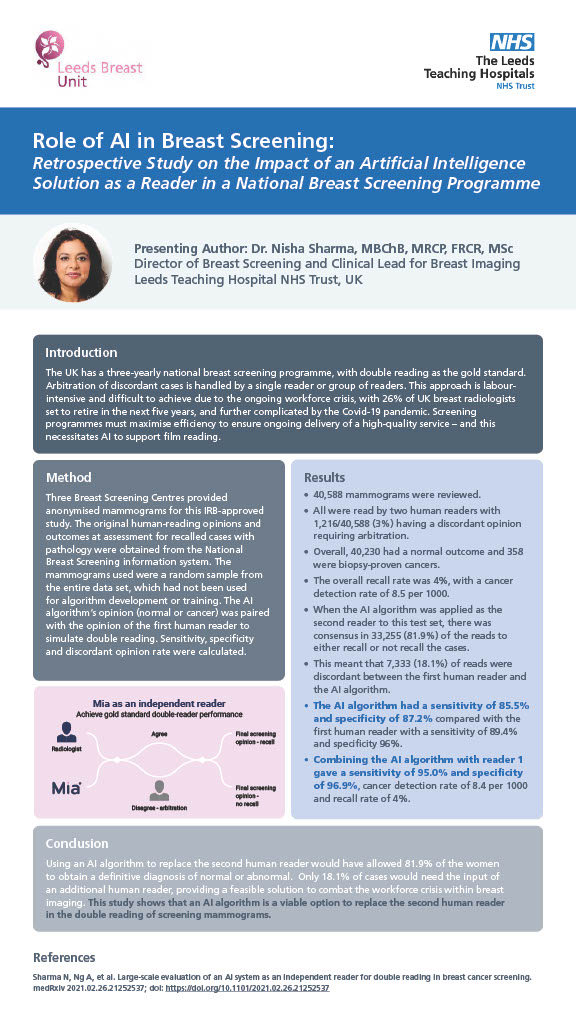

Dr. Nisha Sharma presents ‘Role of AI in Breast Screening’ at RANZCR New Zealand’s 2021 annual meeting

Dr. Nisha Sharma, Director of Breast Screening and Clinical Lead for Breast Imaging at Leeds Teaching Hospital NHS Trust, gave a poster presentation on the ‘Role of AI in Breast Screening’ at The Royal Australian and New Zealand College of Radiologists’ New Zealand 2021 Annual Scientific Meeting.
Dr. Sharma’s poster presentation at RANZCR New Zealand’s 2021 Annual Scientific Meeting focused on a retrospective study on the impact of an artificial intelligence solution as a reader in a national breast screening programme.
In the study, three Breast Screening Centres provided anonymised mammograms for this IRB-approved study. The original human-reading opinions and outcomes at assessment for recalled cases with pathology were obtained from the National Breast Screening information system. The mammograms used were a random sample from the entire data set, which had not been used for algorithm development or training. The AI algorithm’s opinion (normal or cancer) was paired with the opinion of the first human reader to simulate double reading. Sensitivity, specificity and discordant opinion rate were calculated.
Results:
- 40,588 mammograms were reviewed.
- All were read by two human readers with 1,216/40,588 (3%) having a discordant opinion requiring arbitration.
- Overall, 40,230 had a normal outcome and 358 were biopsy-proven cancers.
- The overall recall rate was 4%, with a cancer detection rate of 8.5 per 1000.
- When the AI algorithm was applied as the second reader to this test set, there was consensus in 33,255 (81.9%) of the reads to either recall or not recall the cases.
- This meant that 7,333 (18.1%) of reads were discordant between the first human reader and the AI algorithm.
- The AI algorithm had a sensitivity of 85.5% and specificity of 87.2% compared with the first human reader with a sensitivity of 89.4% and specificity 96%.
- Combining the AI algorithm with reader 1 gave a sensitivity of 95.0% and specificity of 96.9%, cancer detection rate of 8.4 per 1000 and recall rate of 4%.
Conclusion:
Using an AI algorithm to replace the second human reader would have allowed 81.9% of the women to obtain a definitive diagnosis of normal or abnormal. Only 18.1% of cases would need the input of an additional human reader, providing a feasible solution to combat the workforce crisis within breast imaging.

